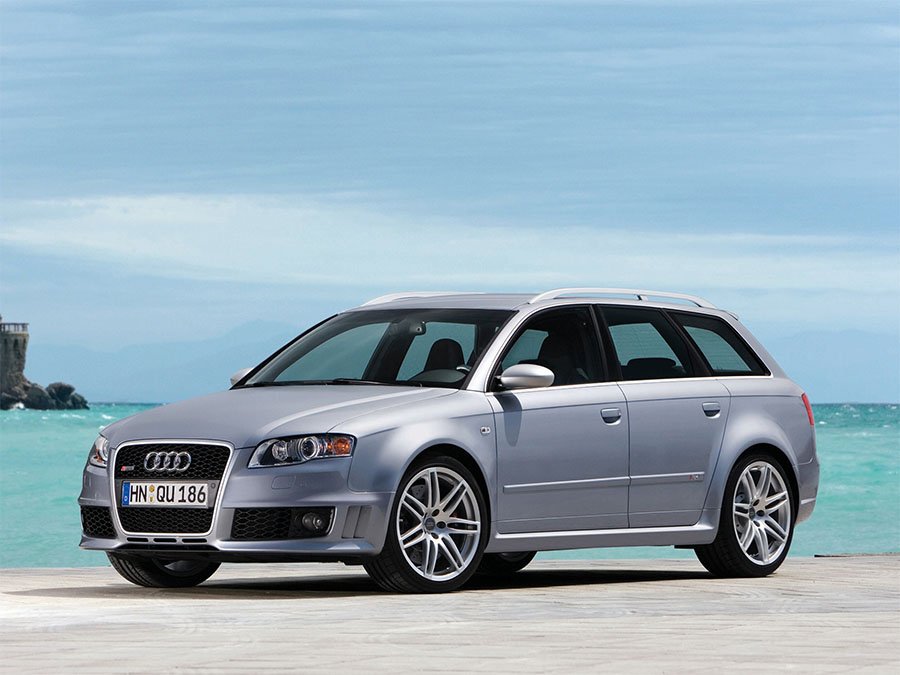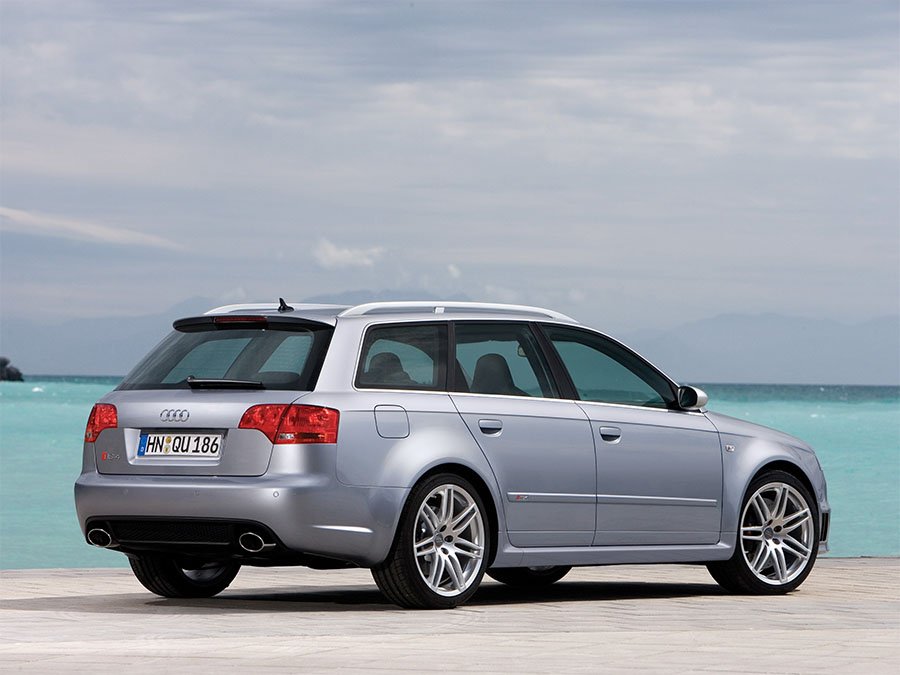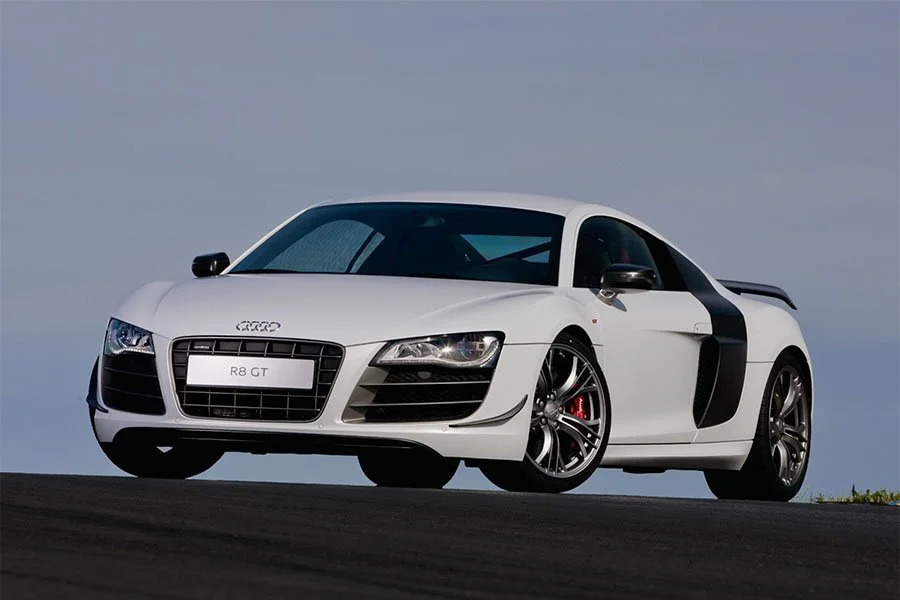Guide: Audi B7 RS4 - a Historical & Technical Appraisal
/BACKGROUND
Although Audi’s line of high performance RS-badged specials had carried the flag for the company since the iconic Quattro had been discontinued in 1991, these hugely desirable Renn Sport derivatives were initially not a permanent fixture in the company’s catalogue.
The original B4-based RS2 was produced from March 1994 to July 1995. Five years then passed before the B5-based RS4 came on stream between May 2000 and September 2001. Both models had been based upon Audi’s compact entry level platform of the time (the 80 and A4 respectively).
While sales of the B4 RS2 had reached just under 3000 units (principally because of poor trading conditions), the B5 RS4 had proven a commercial hit with a little over 6000 produced in just 16 months.
Whereas these first two RS models had been offered exclusively in Avant trim (Audi’s name for an Estate or Station Wagon), the subsequent C5 RS6 (based on the bigger A6 platform and offered from July 2002 until September 2004) was also available as a Saloon.
In addition to having used Audi’s mid-range platform and offered with a choice of body styles, the RS6 further broke with tradition on account of its automatic gearbox. A little over 8000 were built.
Despite the B5 RS4’s critical and commercial success between 2000 and 2001, Audi chose not to offer a like-for-like replacement on the subsequent B6 platform built from 2001 until 2005. Instead, customers had to wait for the further updated B7 to arrive before another compact class Audi RS hit the market.
Audi launched the B7-based A4 at the Frankfurt Motor Show in September 2004.
An early prototype of the highly anticipated RS4 variant was then unveiled during Audi’s Quattro Night celebration at Ingolstadt in February 2005. A production version was displayed at the Detroit Motor Show in January 2006.
Like the original Quattro and all of Audi’s previous Renn Sport models, this latest RS incorporated a full-time four-wheel drive system. However, unlike its predecessors, the B7 RS4 was the first of Audi’s RS models to come with a normally aspirated engine. Furthermore, in addition to having been offered as an Estate and Saloon, a few months after production began, Audi also introduced a Cabriolet version.
Production took place at Audi’s dedicated Quattro GmbH facility in Neckarsulm.
CHASSIS
Each new RS4 was based on the B7’s galvanised steel bodyshell for which Audi used a laser beam seam welding technique instead of traditional spot welding. At 2648mm, the wheelbase was 3mm shorter than the outgoing B6 and 41mm longer than the original B5.
Like every B7, suspension was fully independent. Up front, the RS4 used a magnesium alloy four-link arrangement. At the back were double wishbones via a trapezoidal arm with unequal-length track control arms. KW coil sprung dampers were fitted all around along with thicker anti-roll bars at either end. Compared to the S4, ride height was dropped by 30mm.
The RS4 also incorporated Audi’s mechanical Dynamic Ride Control, an adaptive damping system that featured a fluid hydraulic linkage between the diagonally opposed front and rear dampers to counteract pitch and roll.
Enormous brake discs (now cross-drilled and vented) used a two-piece construction to reduce weight. The fronts went from 345mm on the S4 to 365mm. New eight-piston monobloc calipers were fitted. The rear disc diameter was increased from 300mm to 324mm. Here, single-piston floating calipers were retained.
At 18 x 8.5-inches, the RS4’s five-spoke alloy wheels were half-an-inch wider than the S4 which resulted in broader track at both ends. Handsome 19 x 9-inch seven twin-spoke wheels were optional in most markets but standard in the UK and Japan.
The power-assisted steering was given a quicker rack for more responsive handling.
A 63-litre fuel tank was located underneath the rear seats.
ENGINE / TRANSMISSION
The RS4’s longitudinally-mounted power unit was an all-alloy dual overhead camshaft 90° V8.
Compared to the S4, it came with a new cylinder block, improved crankcase breathing, a low-pressure fuel return system and a baffled oil sump.
There was also a trick direct petrol injection derived from the Le Mans-winning R8 LMP1 car along with two Bosch DI Motronic MED 9.1 electronic engine control units (master and slave).
Other differences included four instead of five valves per cylinder, a new variable valve timing arrangement for the inlet and exhaust camshafts, a cast magnesium alloy intake manifold with adjustable tumble flaps and four high-flow cats. Activating the Sport button in the cockpit gave a sharper throttle response and opened the exhaust bypass valves.
Like the S4, the RS4’s normally aspirated V8 ran a wet-sump lubrication system and displaced 4163cc thanks to a bore and stroke of 84.5mm and 92.8mm respectively. The compression ratio was hiked from 11.0:1 to 12.5:1 which, combined with the aforementioned upgrades, led to some dramatic output gains.
Peak power went from 339bhp at 7000rpm to 414bhp at 7800rpm.
The RS4’s torque rating was 317lb-ft at 5500rpm compared to 302lb-ft at 3500rpm for the S4. So great was the new car’s flexibility that 90% of its torque was available from 2250rpm right up to 7600rpm.
The only gearbox offered was a Getrag six-speed manual.
Power was transmitted through Audi’s latest permanent four-wheel drive system with its third generation Torsen automatic torque biasing centre differential that featured a default 40:60 front-to-rear torque split.
A more aggressive Torque Bias Ratio was used than on other B7s (4:1 as opposed to 2:1 and later 3:1). This meant that one side of the differential could handle up to 80% of the applied torque while the other side only had to handle 20%.
The front and rear axle differentials were conventional open type and traction was assisted by an Electronic Differential Lock.
BODYWORK
As had been the case since the arrival of the B5 in 1994, the B7 was arguably the most attractive looking compact class motor car on the market.
In a fashion typical of Audi’s RS models, this latest iteration of the RS4 was equipped with a variety of cosmetic enhancements that gave a more macho appearance than the comparatively standard-looking S4.
The RS4’s new front bumper housed enlarged corner intakes to feed the two additional front-mounted radiators. Other changes included a more pronounced chin spoiler, slatted cooling vents ahead of the front wheels and mesh instead of egg-crate grilles in all four apertures.
Down each flank were flared wheelarches, deep side skirts and custom mirrors with natural aluminium housings.
At the back was a new bumper assembly with a more pronounced satin black venturi and two instead of four exhausts. The Saloon came with a discrete lip spoiler on the trailing edge of the boot lid. The Avant was equipped with a slightly more pronounced spoiler at the trailing edge of the roof.
To save weight, the front fenders and hood were fabricated from aluminium. The rest of the panels were a mixture of steel and plastic.
INTERIOR
As per the exterior, Audi fitted the RS4 with a host of special interior parts to reflect its status as the firm’s flagship high performance offering on the B7 platform.
Although not fitted to those cars destined for North America (which came with the Sports seats from the S4), examples bound for every other market used lightweight Recaro buckets embossed with the RS4 logo.
Another piece of special equipment was the small diameter flat-bottomed steering wheel which had a perforated leather rim and polished alloy-look lower section complete with another RS4 logo.
The alloy theme continued with drilled pedals, a matching footrest, gear lever inserts and a start button located alongside the handbrake (which itself got a perforated leather grip).
Carbonfibre inserts were fitted to the dash and door panels (instead of alloy).
A lap timer was added to the centre console-mounted Driver Information System.
Standard equipment included leather upholstery, automatic climate control, remote central locking, electric windows, electric mirrors, parking sensors, a ten-speaker Bose audio system and an array of airbags.
OPTIONS
Customers could enhance their car with a variety of optional upgrades.
Among the most desirable options was Sports Suspension Plus which offered a 10mm lower ride height and slightly stiffer damper rates.
Sports Suspension Plus was also available as part of the Sport Pack bundle that included inflatable front seat bolsters that enabled the driver and passenger to adjust the seat’s profile for a perfect fit.
Other options included adaptive headlights which adjusted according to the direction of steering, a steering wheel with carbonfibre instead of alloy inserts, a Symphony II audio system with six CD changer and cassette player, Navigation System Plus and lower side airbags for the rear seats.
There was also the aforementioned 19 x 9-inch wheel upgrade (standard in the UK and Japan).
WEIGHT / PERFORMANCE
Like many German manufacturers, Audi electronically limited the RS4’s top speed to 155mph. In de-restricted form it was said to be good for around 185mph.
The Saloon weighed 1650kg and had a 0-62mph time of 4.6 seconds.
The Avant tipped the scales at 1710kg and was two tenths slower (4.8 seconds).
2007 MODEL YEAR CABRIOLET & CARBON BRAKE OPTION
For the 2007 model year (available from late 2006) Audi added an RS4 Cabriolet to the range. It came with an electric folding canvas roof that disappeared completely from view when lowered.
Unlike the Saloon and Estate, the RS4 Cabriolet was fitted with a suitably reinforced natural alloy windscreen surround. Beefed up sills and custom tail lights were adopted too.
Weight was 1845kg (an increase of 195kg over the Saloon and 135kg over the Avant). Top speed was again limited to 155mph. 0-62mph took 5 seconds flat.
Audi added carbon ceramic discs to the options list for 2007. In addition to the enormous 380mm discs (supplied by SGL Carbon), this expensive upgrade included Brembo six-piston floating monobloc calipers. 19-inch wheels had to be specified as the 18-inch rims were too small for installation of the new discs and calipers.
END OF PRODUCTION
Production of the B7 RS4 ended in the autumn of 2008, by which time around 10,000 examples had been completed across the three different body styles.
Unfortunately, Audi customers had another long wait on their hands until the next RS4 became available as the subsequent B8-based variant did not enter production until 2012.
Text copyright: Supercar Nostalgia
Photo copyright: Audi - https://www.Audi.com








































